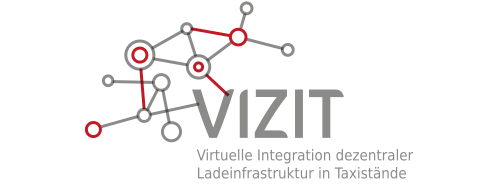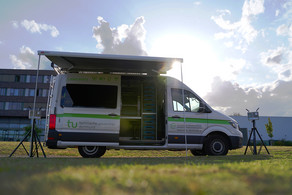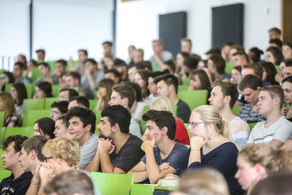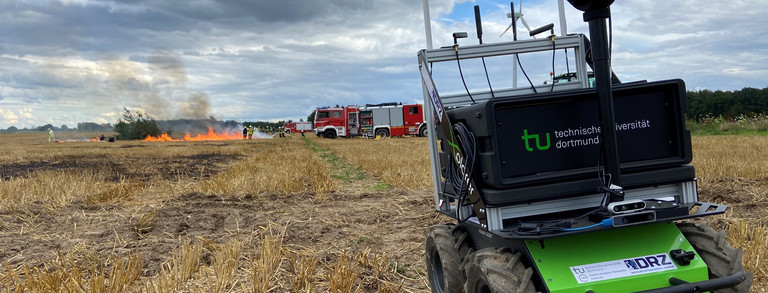VIZIT - Virtual integration of decentralized charging infrastructure in cab stands
The VIZIT project elaborates a concept for the provision of public charging infrastructure for inner-city public transport by cabs and puts it into operation. In this process, constructional restrictions on the installation of charging infrastructure at existing cab stands are resolved by the virtual spatial extension of cab stands to surrounding public charging infrastructure. The resulting issues in the initiation of virtual cab stands, such as the allocation/reservation of public infrastructure, communication requirements for the collection and transmission of all necessary information as well as the consolidation and processing of the data generated during the process will be conceptualized and exemplarily integrated into the existing infrastructure of the city of Dortmund.
Project duration: 16.12.2020 - 31.12.2023

As a key component for the virtual integration of decentralized charging infrastructures, reliable connectivity information is essential. In this context, CNI plays a key role in developing a framework that enables an evaluation of the feasibility of virtual cab stands from a communication technology perspective. CNI contributes a data-driven approach for the analysis and optimization of dynamic communication environments and extends this to a crowdsensing approach for the determination of communication-related potentials. The objective is to derive a city-wide connectivity map that enables a reliable and network operator-independent assessment of communication connectivity.
The project is funded by the Federal Ministry of Transport and Digital Infrastructure under grant number 16DKVM006B.
Project Facts
Funding Programm
Digitization of municipal transport systems by the Federal Ministry for Digital and Transport (BMDV)
Project duration
16.12.2020 - 31.12.2023
Project Partner
City of Dortmund
Dortmund municipal utilities (DEW21, affiliated)
News
Publications
Data-Driven Energy Profiling for Resource-Efficient 5G Vertical Services
H. Schippers, C. Wietfeld
In IEEE Consumer Communications & Networking Conference (CCNC), Jan. 2024.
Integration of Scaled Real-world Testbeds with Digital Twins for Future AI-enabled 6G Networks
C. Krieger, H. Teper, J. Freytag, I. Priyanta, P. Schulte, M. Roidl, J.-J. Chen, C. Wietfeld
In IEEE Globecom Workshops (GC Wkshps), Dec. 2023.
Data-Driven Digital Mobile Network Twin Enabling Mission-Critical Vehicular Applications
H. Schippers, S. Böcker, C. Wietfeld
In 2023 IEEE 97th Vehicular Technology Conference (VTC-Spring), Florence, Italy, June 2023.
System for Continuous Multi-Dimensional Mobile Network KPI Tracking and Prediction in Drifting Environments
H. Schippers, S. Böcker, C. Wietfeld
In 2023 Annual IEEE International Systems Conference (SysCon), Vancouver, Canada, April 2023.
System Modeling and Performance Evaluation of Predictive QoS for Future Tele-Operated Driving
H. Schippers, C. Schüler, B. Sliwa, C. Wietfeld
In 2022 Annual IEEE International Systems Conference (SysCon), Virtual Event.
Machine Learning-Enabled Data Rate Prediction for 5G NSA Vehicle-to-Cloud Communications
B. Sliwa, H. Schippers, C. Wietfeld
In IEEE 4th 5G World Forum (5GWF), Virtual, October 2021





